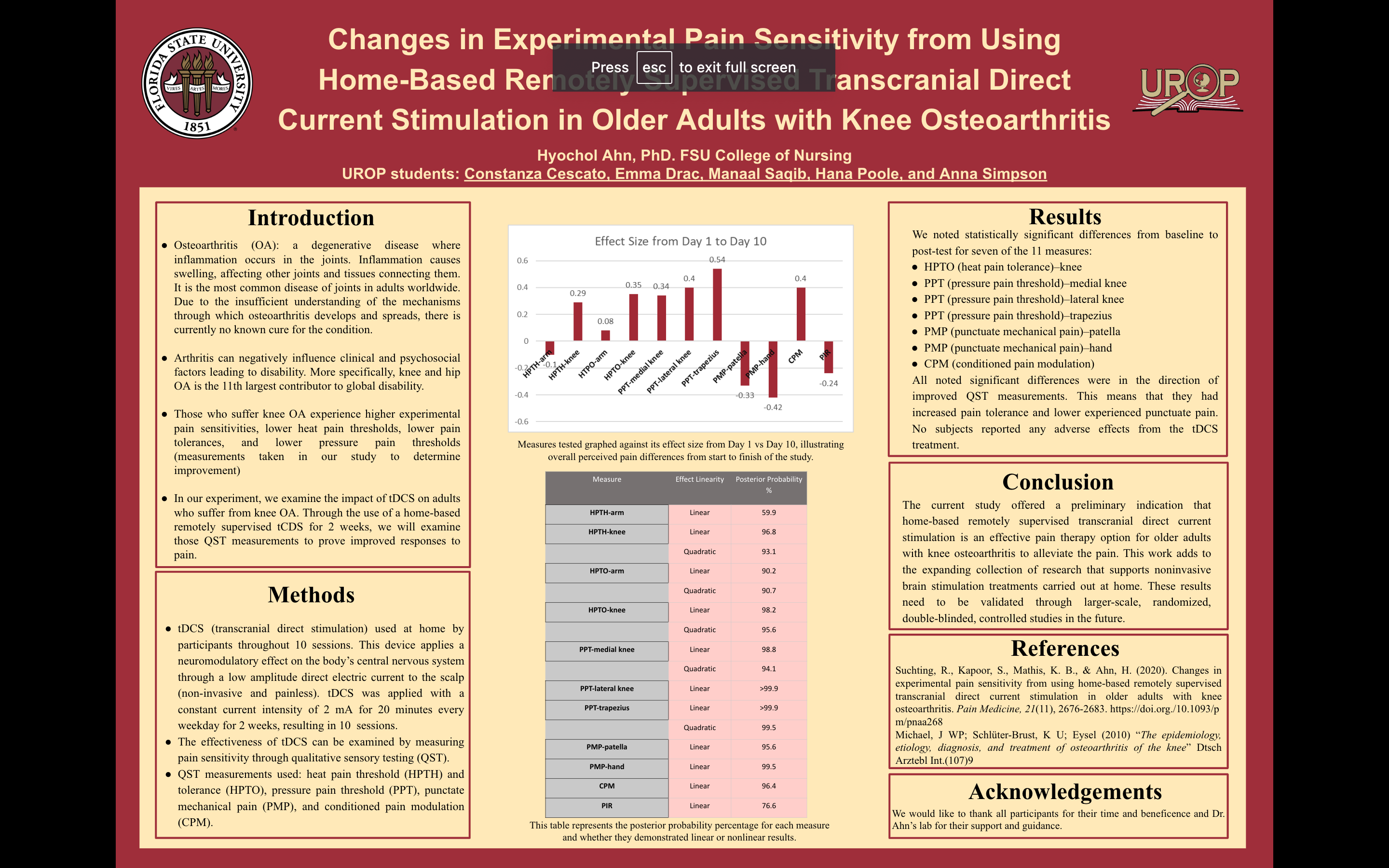Research Symposium
23rd annual Undergraduate Research Symposium, April 6, 2023
Constanza Cescato Poster Session 1: 11:00 am - 12:00 pm/ Poster #12

BIO
My name is Constanza Cescato, and I am a freshman majoring in Behavioral Neuroscience as a pre-medical student. I was born and raised in Rosario, Argentina. I have always enjoyed school, especially when it came to science classes. I have a huge passion towards the human body, and I am intrigued by the human brain. My research interests are starting to incline towards language and its relationship to personality and the brain. Child development and learning is also sparking an interest in me; I am currently a mentor in an Elementary School and spent the last year in an internship with Big Brothers Big Sisters, an organization that seeks to change children's lives for the better. I aspire to be a physician in the future. In the meantime, I hope I can make the most out of my undergraduate studies by continuing to explore the healthcare field with an open mind, and meeting inspiring people along the way.
Changes in Experimental Pain Sensitivity from Using Home-Based Remotely Supervised Transcranial Direct Current Stimulation in Older Adults with Knee Osteoarthritis
Authors: Constanza Cescato, Dr. Hyochol AhnStudent Major: Behavioral Neuroscience
Mentor: Dr. Hyochol Ahn
Mentor's Department: Nursing Mentor's College: College of Nursing Co-Presenters:
Abstract
Transcranial direct current stimulation (tDCS) involves a directed low-amplitude electrical current to affect the activity of the motor cortex and supraorbital region in the brain. Increasing ranges of literature supports that mindfulness-based meditation (MBM) assists in providing analgesia-like effects for pain. In this study, 30 subjects with chronic osteoarthritis (OA) knee pain aged 50 to 85 years utilized self-administered tDCS and performed meditative exercises to treat their pain symptoms. Combining MBM and tDCS has rarely been studied, despite knee OA being the most prevalent joint disease. On every weekday for two weeks (10 days), subjects remotely participated in 20-minute sessions of tDCS at a constant current intensity to the motor cortex and supraorbital regions along with MBM exercises. Researchers measured the subjects' heat, pain, and pressure tolerances using a visual analog scale, pain questionnaires, quantitative sensory testing, and current stimulation devices for 3 days within 10 days, in addition to their pain symptoms. Pain levels and OA symptoms were measured using a Numeric Rating Scale and the Western Ontario and McMaster Universities Osteoarthritis Index. The results indicated improvement in osteoarthritis pain symptoms and sleep quality, no effect on anxiety or depression, and no adverse effects caused by tDCS. Self-administered tDCS monitored remotely was found to be successful with older patients. tDCS combined with MBM decreased results on the Numeric Rating Scale and Western Ontario and McMaster Universities Osteoarthritis Index.
Keywords: transcranial direct current stimulation


